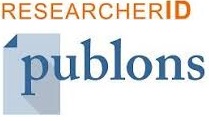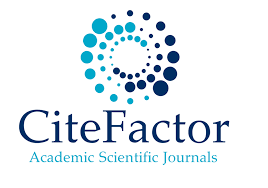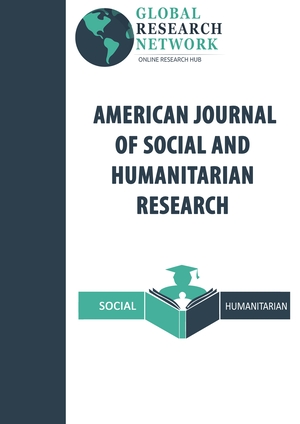Identification of Students' Errors in Solving Mathematical Literacy Problems on Quadratic Function Material
Abstract
Mathematical literacy is an essential skill to master; however, the results of the PISA survey participated in by Indonesia indicate the low mathematical literacy skills of Indonesian students. To address the low level of students' literacy skills, it is necessary to identify the types of errors students make in solving mathematical literacy problems. This study aimed to analyze the errors made by junior high school students in solving mathematical literacy problems on linear function material. The research design used was a descriptive qualitative approach by selecting tree Grade VIII junior high school students from one of the schools in Bengkulu City as the subjects. The data were obtained using a mathematical literacy test instrument on linear function material given to the students. The description of errors was derived from analyzing the students’ work in solving problems within the process domain of mathematical literacy. Based on the analysis of students’ answers, several errors were found when they solved mathematical literacy problems in the processes of formulating, employing, and interpreting. The students’ errors in solving problems on quadratic function material included, at the formulate stage, failing to write the given and required information from the problem, and incompletely translating the problem into mathematical expressions. At the employ stage, students made errors in the solution steps, such as calculation mistakes and errors in algebraic operations. At the interpret stage, students made mistakes in formulating the solution into a proper conclusion.
Keywords
Full Text:
PDFReferences
R. Begum and H. A. Liton, “Needs and Demands Of 21st Century Learning Skills: A Reflective International Journal of English Language, Literature and Translation Studies (IJELR ) Needs And Demands of 21 St Century Learning Skills : A Reflective,” Int. J. english Lang. Lit. Transl. Stud., vol. 5, no. 1, pp. 222–232, 2018.
Ratna Rintaningrum, “Explaining the Important Contribution of Reading Literacy to the Country’s Generations: Indonesian’s Perspectives,” Int. J. Innov. Creat. Chang., vol. 5, no. 3, pp. 936–953, 2019, [Online]. Available: https://www.ijicc.net/images/Vol_5_Iss_3/Part_2_2020/5310_Ratna_2019_E_R.pdf
W. Wardono, N. Karomah Dwidayati, J. Dalu Bintang, K. Komodo, K. Manggarai Barat, and N. Tenggara Timur, “Mathematical Literacy Ability Viewed by Students’ Mathematical Habits of Mind Using Quick on the Draw Model With SPUR Approach,” Ujmer, vol. 10, no. 1, pp. 40–49, 2021, [Online]. Available: http://journal.unnes.ac.id/sju/index.php/ujmer
OECD, “Pisa 2022 Mathematics Framework ( Draft ),” no. November 2018, 2018, [Online]. Available: https://pisa2022-maths.oecd.org/files/PISA 2022 Mathematics Framework Draft.pdf
W. A. Rahmawati, B. Usodo, and L. Fitriana, “Mathematical Literacy of Students Who Have High Mathematical Disposition in Solving PISA-Like Mathematics Problems,” Proc. Int. Conf. Math. Math. Educ. (I-CMME 2021), vol. 597, pp. 281–287, 2021, doi: 10.2991/assehr.k.211122.039.
D. W. Fointuna, A. H. Kaluge, and A. J. Fernandez, “An analysis of mathematical literacy of state junior high school students in Kupang,” J. Phys. Conf. Ser., vol. 1422, no. 1, 2020, doi: 10.1088/1742-6596/1422/1/012025.
N. Ratnaningsih and E. Hidayat, “Error analysis and its causal factors in solving mathematical literacy problems in terms of habits of mind,” J. Phys. Conf. Ser., vol. 1764, no. 1, 2021, doi: 10.1088/1742-6596/1764/1/012104.
N. Nuryati, S. S. Purwaningsih, and E. Habinuddin, “Analysis of errors in solving mathematical literacy analysis problems using newman,” Int. J. Trends Math. Educ. Res., vol. 5, no. 3, pp. 299–305, 2022, doi: 10.33122/ijtmer.v5i3.164.
A. Dwita and H. Retnawati, “Students’ errors in solving mathematical problems,” AIP Conf. Proc., vol. 2575, no. December, 2022, doi: 10.1063/5.0107794.
OECD, PISA 2018 Results (Volume I), vol. I. 2019. doi: 10.1787/5f07c754-en.
W. Islamiyah, D. Suryadi, and M. A. Gulvara, “Student Errors on Quadratic Function Story Problems Based on The Nolting Theory,” Edumatica J. Pendidik. Mat., vol. 13, no. 03, pp. 191–202, 2023, doi: 10.22437/edumatica.v13i03.26254.
N. R. Aini, S. Syafril, N. Netriwati, A. Pahrudin, T. Rahayu, and V. Puspasari, “Problem-Based Learning for Critical Thinking Skills in Mathematics,” J. Phys. Conf. Ser., vol. 1155, no. 1, 2019, doi: 10.1088/1742-6596/1155/1/012026.
N. N. Azizah, S. Susiswo, and S. Sisworo, “Analytical Thinking Process of Students in Solving Mathematical Problems of Quadratic Functions,” AKSIOMA J. Progr. Stud. Pendidik. Mat., vol. 10, no. 1, p. 328, 2021, doi: 10.24127/ajpm.v10i1.3440.
R. R. Musafir and S. Susiswo, “The strategies and errors of high school students’ in solving logarithmic inequalities,” AIP Conf. Proc., vol. 2330, no. March, 2021, doi: 10.1063/5.0043439.
S. I. Hasanah, C. F. Tafrilyanto, and Y. Aini, “Mathematical Reasoning: The characteristics of students’ mathematical abilities in problem solving,” J. Phys. Conf. Ser., vol. 1188, no. 1, 2019, doi: 10.1088/1742-6596/1188/1/012057.
DOI: http://dx.doi.org/10.52155/ijpsat.v51.1.7271
Refbacks
- There are currently no refbacks.
Copyright (c) 2025 Dwika Rahmi Hidayanti, Kana Hidayati

This work is licensed under a Creative Commons Attribution 4.0 International License.



















